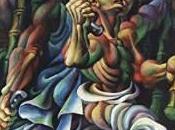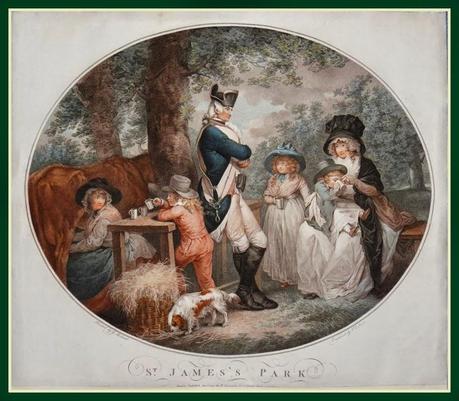
ISPIRATO IN PRINCIPIO DA SOGGETTI ELEGANTI E RAFFINATI, col tempo si sentì attrarre da modelli di vita più semplici ed umili, da scene di borgate e di campagna, che mai, sulle sue tele, perdono dignità e raffinatezza o cadono nella grettezza: la vita nel cottage, la stalla e la locanda con gruppi di uomini e donne ritratti in pose naturali, od, ancor più naturali, gli animali, diverranno gli ultimi soggetti dei suoi innumerevoli dipinti ( se ne contano più di quattromila )
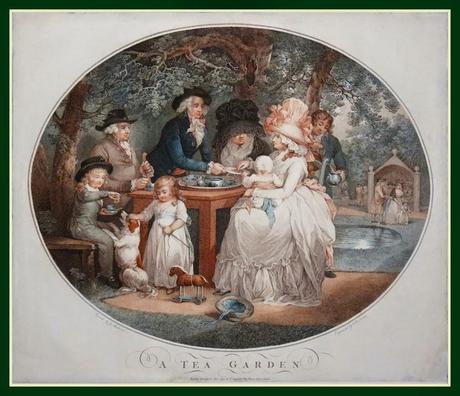
Coppia di incisioni 'a punteggiatura' stampate a colori da F.D. Soiron da dipinti di George Morland
Pubblicati nel gennaio 1790
Vi porto oggi con queste immagini nella Londra dell'epoca Georgiana ( 1714 -1830 /1837 ) che diede i natali a George Morland il 26 giugno 1763; figlio di Henry Robert Morland, e nipote di Henry George Morland, entrambi celebri pittori, iniziò con il disegnare a tre anni, e all'età di dieci anni il suo nome appariva già tra quelli degli espositori alla Royal Academy... lui però ne faceva parte a titolo onorario !
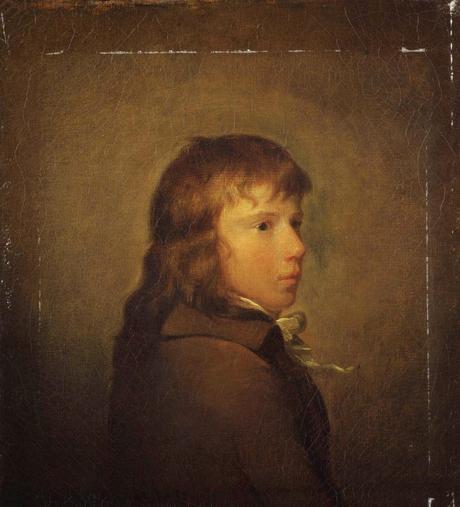 George Morland by George Morland, 1773
George Morland by George Morland, 1773Va detto che i suoi talenti furono accuratamente coltivati dal padre che fu accusato di farlo in vista esclusivamente del proprio profitto - si diceva chiudesse il bambino in una soffitta per fargli fare disegni da immagini e schizzi per cui aveva già pronti gli acquirenti - ma vi è chi narra che, invece, fosse il ragazzo ad aver presto trovato un modo per fare soldi da spendere per proprio gaudio, nascondendo alcuni disegni per poi passarli, al calar della notte, fuori dalla sua finestra a giovani complici, con i quali era solito trascorrere il proprio tempo, spendendone in sollazzi i proventi ed è forse questa la tesi più accreditabile visto che è stato anche affermato che l'anziano genitore, scoprendo questo 'trucco', cercò di conciliare le esigenze di entrambi, assecondando in parte i capricci del fanciullo.
Il vecchio Henry Robert Morland gli insegnò a prendere d'esempio e a copiare tutti gli stili, ma soprattutto quelli dei maestri olandesi e fiamminghi e prima che il suo apprendistato giungesse a compimento il giovane venne contattato da George Romney il quale, notandone la non comune bravura, gli propose il proprio tetto, vitto ed alloggio, ed uno stipendio di £ 300 a condizione di esercitare i diritti di proprietà sui suoi dipinti per tre anni, ma Morland non accettò e dopo aver interrotto i rapporti già difficili da tempo con il padre si mise in proprio nel 1784 o 1785 in casa di un commerciante di quadri, iniziando a vivere un'esistenza in cui la combinazione di duro lavoro e vizio del bere lo condizioneranno irrimediabilmente: divenendo ben presto schiavo dell'uomo a servizio del quale viveva, spesso, quando non dipingeva, trascorreva il proprio tempo in compagnia di stallieri, fantini, usurai, prestatori di denaro su pegno, teppisti, e pugili.
Qui il bel giovane artista si sentiva spavaldo, era facile vederlo girare per la fattoria abbigliato di un cappotto verde, con grandi bottoni gialli, calzoni di pelle ed alti stivali, ammirato da tutti i lavoranti più umili.
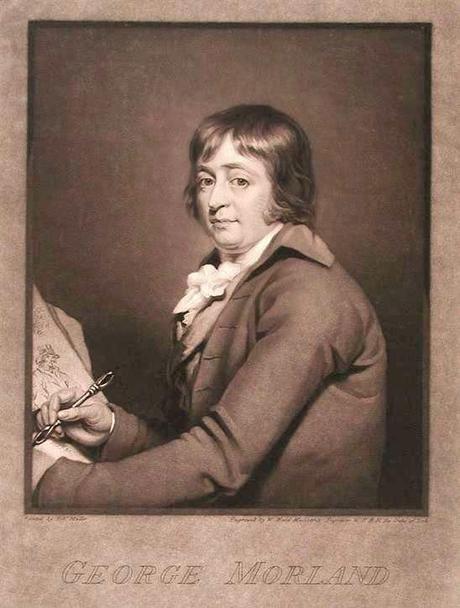
George Morland, incisione di William Ward dopo Robert Muller, 1805
La sua vita cominciò così a farsi dissoluta, riabilitata solo per poco dal matrimonio con Anne Ward ( luglio 1786 ); la perdita del figlio al momento del parto e la grave malattia che da allora segnerà la vita della moglie lo portarono a fuggire e a cambiare spesso dimora, per non farsi trovare dai creditori: la sua arte era molto celebre ed apprezzata - dal 1788 al 1792 compreso, sono stati pubblicati oltre un centinaio di incisioni ricavate dai suoi dipinti -, ma egli si accontentava di scarsi guadagni, di vivere alla giornata ed il tenore a cui voleva condurre la propria esistenza lo porterà ad essere incarcerato più volte per insolvenza di debiti; il 27 ottobre 1804 morirà per un malore dopo aver perso, di conseguenza ad una paralisi, l'uso della mano sinistra e perciò la possibilità di tenere la propria tavolozza; tre giorni dopo si spegnerà la moglie e perciò vennero tumulati insieme nel sepolcreto allegato alla Cappella di St.James's Hampstead Road.
Ma torniamo ai suoi dipinti, espressione di vita vera osservata con la più pura semplicità d'animo; quando egli raffigurava la 'gentry' non ne metteva in risalto gli eccessi, tutt'altro, lo faceva cogliendovi gli aspetti di vita più semplici, quasi come se cercasse di colmare, almeno sulle sue tele, il divario che allora, tra le classi sociali, era di una notevolezza quasi incolmabile, esaltando, per esempio, i buoni sentimenti e precorrendo, in tal modo, il pietismo tanto caro all'epoca vittoriana, mirabilmente espresso in letteratura dalla penna maestra di Charles Dickens;
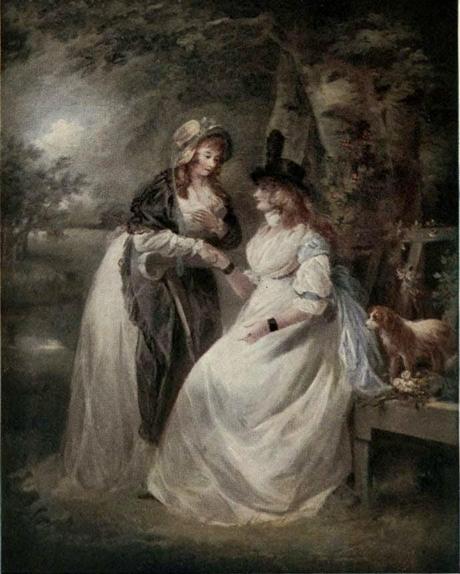
Confidences
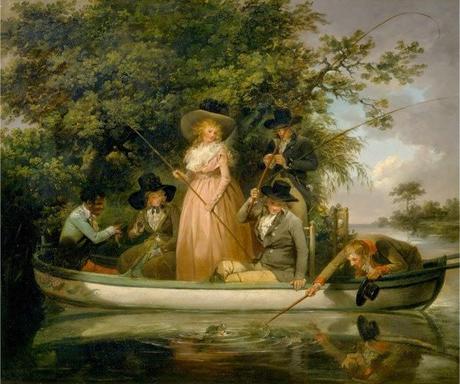
Sifting the Past - A party angling,1789
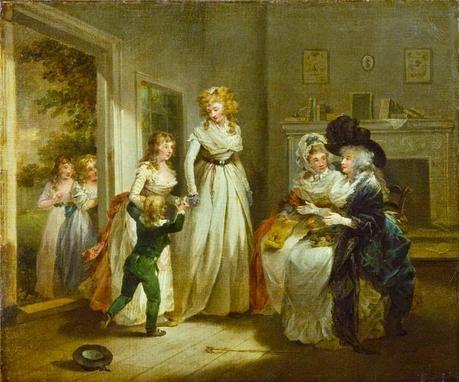
A Visit to the Boarding School, 1788
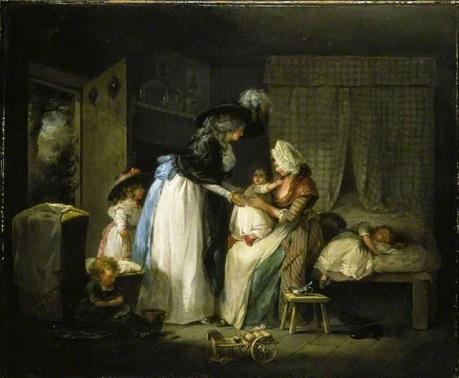
Visit to the Child at Nurse, 1788
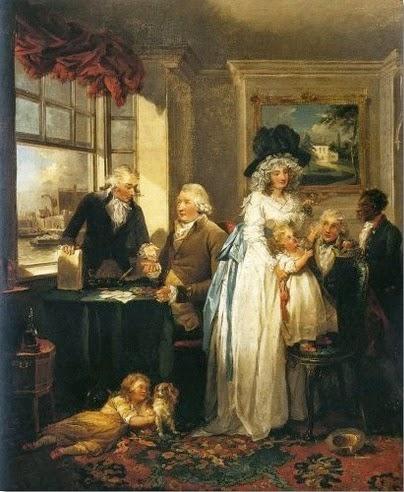
Fruits of Early Industry and Economy, 1789
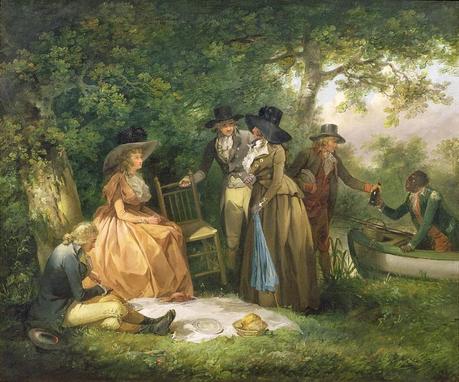
The Angler's Repast
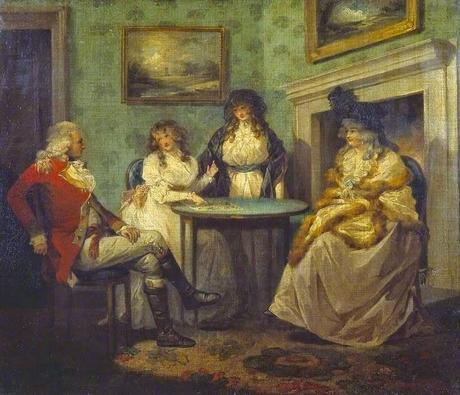
The Fortune Teller
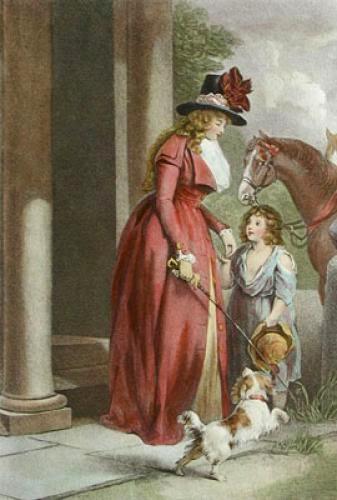
The Squire's Door
quando ad ispirarlo erano invece scene più rustiche, i suoi occhi si posavano sui gesti quotidiani degli abitanti la campagna, su quei gesti che pur se ordinari, semplici, rendono dignitose e degne di prestigio le vite condotte in estrema umiltà ...

The Comforts Of Industry
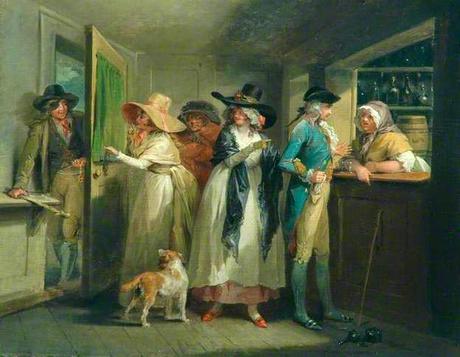
Easy Money
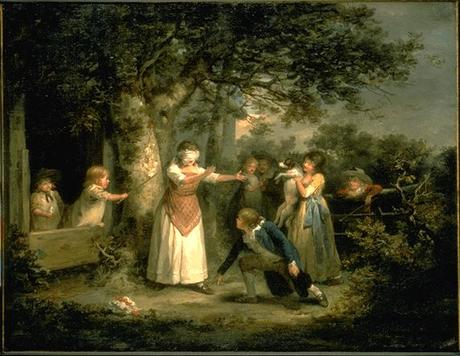
Blind Man's Bluff, 1787-88
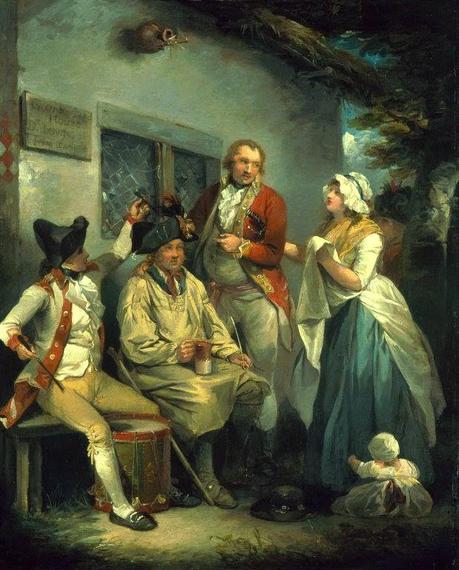
Trepanning a Recruit, 1790
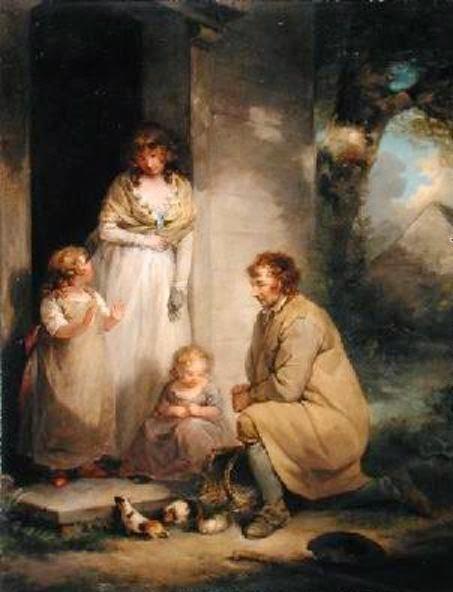
Guinea-pigs, 1789
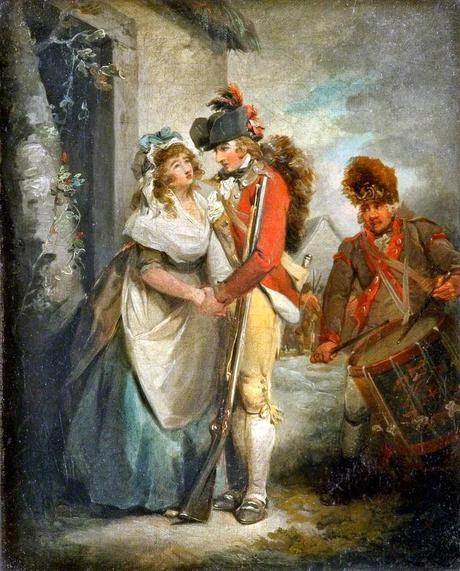
The Soldier's Departure, 1791
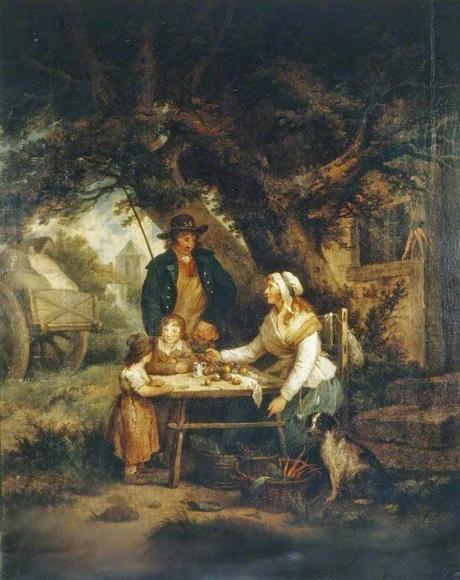
Selling Carrots, 1795
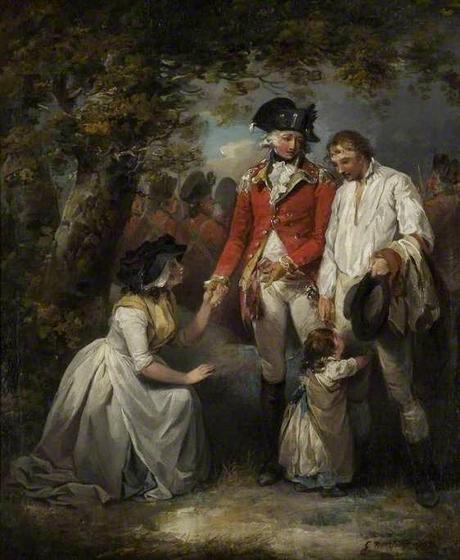
The Deserter Pardoned, 1802
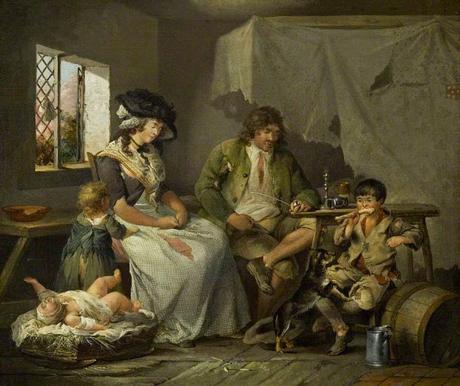
The Miseries of Idleness, 1780
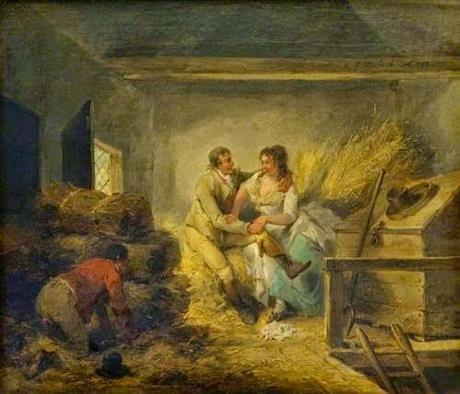
Lovers observed
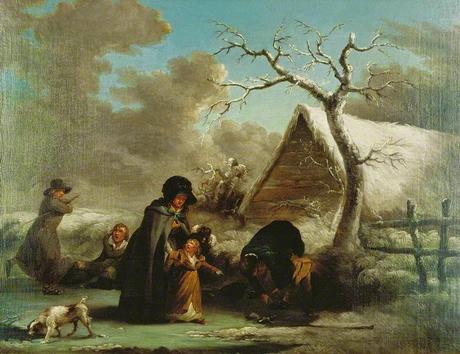
Skating, 1792Scriverà più tardi Oscar Wilde: Chi è povero, essendo amato ?
A ben pensarci cosa riconforta il cuore più dell'amore ... non esiste al mondo moneta che ci possa dare qualcosa di analogo a quanto questo nobile sentimento riesce a donarci ... e mai esisterà, ne sono certa !
Auguro tanto amore, a voi tutti !
A presto ♥
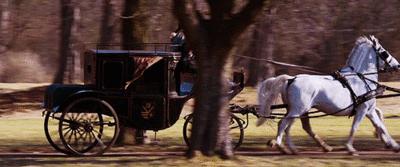

Bibliografia:
Ralph Richardson, George Morland: Painter, London (1763-1804), Ulan Press, 2012

- picture 1 - St.James's Park
AT FIRST INSPIRED BY ELEGANT AND REFINED PEOPLE, over time he felt attracted by simpler and humbler scenes of life, scenes of villages and of the countryside, which never lost, anyway, dignity and refinement or felt into meanness: the life inside the cottage, the stables and the inn with groups of men and women portraited in natural attitudes, or, even more natural, animals, will become the latest subjects of his several paintings ( they're more than four thousands )
- picture 2 - A Tea Garden - Pair of stipple engravings printed in colours by F.D. Soiron from paintings by George Morland, Published in January 1790
I'm taking you today, with these images, to the Georgian era ( 1714 - 1830/1837 ) London, which was the birthplace of George Morland on June 26th, 1763; son of Henry Robert Morland, and grandson of Henry George Morland, both famous painters, he began to draw at the age of three years, and at the age of ten (1773) his name appeared already among the exhibitors at the Royal Academy ... . though he was part of them as honorary member !
- picture 3 - George Morland by George Morland, 1773
It must be said that his talents were carefully cultivated by his father who was accused of doing it only in view of his profit - they said he shut his child in an attic where he painted drawings from images and sketches for which he had ready his buyers - but there is who said that, however, the boy had soon found a way to make money to spend on his own joy, hiding some drawings of his and then passing them, at nightfall, out of his window, to some young accomplices, with whom he used to spend his spare time, among amusements and this is perhaps the most creditable thesis since it was also stated that his father, discovering this trick, tried to reconcile the needs of both, supporting in part the whims of his son.
The old Henry Robert Morland taught him to take as example and copy all the styles, especially those of the Dutch and Flemish masters and before his apprenticeship was to succeed in carrying out the boy was contacted by George Romney who, noting his uncommon skill, proposed him his own 'roof', room and board, and a salary of £ 300 with the condition to exercising all the rights of ownership on his paintings for three years, but the young Morland didn't accept and having already difficulties in the relationship with his father, he decided to start his own business in 1784 or 1785 in the house of a merchant of paintings and began to live a life in which the combination of hard work and the habit of drinking will hopelessly affect him: he became soon a slave in the service of the man whom he lived with and often, when he didn't paint, he spent his time togheter with grooms, jockeys, loan sharks, lenders of money on pledge, thugs, and boxers
Here, the handsome young artist was feeling cocky, it was easy to see him walk around the farm dressed with a green coat, with big yellow buttons, leather breeches and high boots, admired by all the humbler workers.
- picture 4 - George Morland engraved by William Ward after Robert Muller, 1805
His life began to be well dissolute, rehabilitated only for a short time thanks to the marriage with Anne Ward ( July 1786 ); the loss of his child at birth and the serious illness that since then will mark his wife's life led him to escape and to change often residence, not to be found by creditors: his art was very famous and appreciated - ( between the years 1788 - 1792 included, they will be published over one hundred engravings derived from his paintings -, but for him they were enough poor earnings and to live for the day and the tenor who wanted to lead his own life led him to be imprisoned several times for insolvency debts; on October 27th, 1804 he'll die from a collapse after having lost the use of his left hand as a result of a paralysis, and with it the ability to keep his palette; three days after his wife will expire and that's why they were buried together in the cemetery beside the St. James's Chapel in Hampstead Road.
But let's come back to his paintings, expression of real life observed with the purest simplicity of mind; when he depicted the 'gentry' he didn't emphasized their excesses, indeed, far from it, he did it finding in them the most simple aspects of their life, almost as trying to fill, at least on his canvases, the gap between the social classes, that was then of a greatness almost unbridgeable, highlighting, for example, the good feelings and anticipating, doing so, the pietism so dear to the Victorian era, admirably expressed in literature by Charles Dickens' teacher pen;
- picture 5 - Confidences
- picture 6 - Sifting the Past - A party angling,1789
- picture 7 - A Visit to the Boarding School, 1788
- picture 8 - Visit to the Child at Nurse, 1788
- picture 9 - Fruits of Early Industry and Economy, 1789
- picture 10 - The Angler's Repast
- picture 11 - The Fortune Teller
- picture 12 - The Squire's Door
when, instead, they were rustic scenes to inspire him, his eyes rested on the everyday actions of the inhabitants of the country, of those gestures that although ordinary, simple, make worthy of dignity and prestige the lives lived in extreme humility ...
- picture 13 - The Comforts Of Industry
- picture 14 - Easy Money
- picture 15 - Blind Man's Bluff, 1787-88
- picture 16 - Trepanning a Recruit, 1790
- picture 17 - Guinea-pigs, 1789
- picture 18 - The Soldier's Departure, 1791
- picture 19 - Selling Carrots, 1795
- picture 20 - The Deserter Pardoned, 1802
- picture 21 - The Miseries of Idleness, 1780
- picture 22 - Lovers observed
- picture 23 - Skating, 1792
Oscar Wilde would write later:
Who is poor, being loved?
Actually, what comfort our heart more than love ... there is no money in the world able to give us something similar to what this noble sentiment can give us ... and never will exist, I'm sure!
I wish you all much love !
See you soon ♥
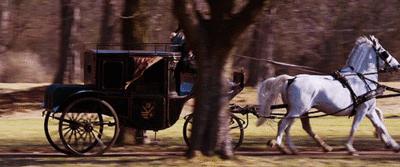

Bibliography:Ralph Richardson, George Morland: Painter, London (1763-1804), Ulan Press, 2012


